What are the different types of refrigerant and what does the future hold for refrigerants with the strict news laws and regulations coming in worldwide. Lets take a look at the current refrigerants as well which ones we will have to adopt in the near future as well as understanding why these are changing. If you scroll to the bottom of this article you will find a video tutorial on the subject.
For more information please visit the Danfoss website. Danfoss is your go-to source for information and resources that can help you through the cooling industry’s transition to natural and climate-friendly refrigerants. They have a deep understanding of all the new regulations and their effects, and they’re ready to share their knowledge and solutions with you. They’ve also made helpful tools like their refrigerant retrofit guide, Low-GWP Tool, and Coolselector 2 app available for free on their website. You can access them now by visiting Refrigerants.Danfoss.com.
When we talk about refrigerants, we mean a fluid which is able to easily evaporate and condense continuously. We learned how a refrigerant works in our last post which you can access by clicking here.
The historic and current main types of refrigerants are
- CFC – ChloroFluoroCarbons
- HCFC – HydroChloroFluoroCarbons
- HFC – HydroFluoroCarbons
However, all of these have been or will be replaced in the future because of their effects on the environment. So if you’re working in the refrigeration industry or studying to enter it, you will see a big transition into the next generation over your career.
Now unless you’re one of the scientists developing these refrigerants then you don’t really need to know what all the numbers and letters mean, but you should know the basics. The “R” simply means refrigerant, the numbers mean the quantity of each atom with each digit corresponding to a specific type and the small letters at the end give a scale of the compounds symmetry. (Blank, a,b or c).
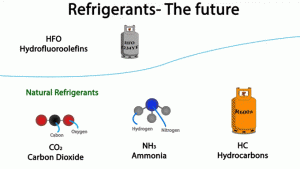
What does the future of refrigerants look like?
The market is heading in the following directions. One route is the natural refrigerants such as Carbon Dioxide, Ammonia and Hydrocarbons. These all have very low global warming potential some even zero, they have good thermodynamic properties also and most are fairly cheap to manufacture. HFO’s are stepping in to replace many HFC’s as these have much lower global warming potentials and do not destroy the ozone although some are flammable.
With the new laws and regulations coming in, you’ll have to start retrofitting your systems over to new refrigerants, and we will look at more detail of that in the next article, but one thing to consider for now is the glide of the retrofit blend refrigerants as some of these are quite high. Consideration must be taken for the refrigeration system components to ensure they will function optimally using these different refrigerants. So do reach out to specialists such as Danfoss to help you with this.
A brief history of refrigerants
In the early days natural refrigerants were used, but, there was little to no safety regulations so systems ended up using very dangerous refrigerants. Some were highly flammable and some were even toxic! Soon scientists realised the markets need for better and safer refrigerants.
Then in the 1930’s they developed CFC’s, which were scientifically tested and were safer to use. They were nonflammable, nontoxic and a noncorroding gas which was cheap to produce, so they seemed ideal. However in the 1970’s they realised that the chlorine molecules within these were completely destroying our ozone layer and were banned. We’ll look at why just shortly.
In the late 1970’s, early 1980’s scientists developed HCFC’s which had far less damaging effects on the ozone, however, HCFC’s were still able to damage the ozone layer because they contained chlorine molecules, again we will look at why these are bad in just a moment.
To solve the issue of ozone destruction scientists came up with HFC’s which did not contain chlorine, this meant they wouldn’t destroy the ozone layer. However, they later realised HFC’s still damage the environment because they are greenhouse gases and so these are beginning to be phased out also.
Now, like I mentioned earlier, we are seeing the 4th generation of refrigerants emerge into the market which have great thermodynamic properties and are environmentally friendly.
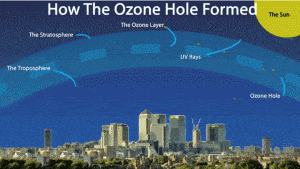
How did the hole in the ozone layer form?
The ozone depleting chemicals rise up into the stratosphere and the chemicals are swept into the winds of the polar vortex, which is a ring of fast moving air that circles the south pole, and the chemicals have been building up here since CFC refrigerants first started being used.
This build up in the south pole has been destroying the Ozone layer by burning a hole through it. The laws and regulations on the use of chemicals in refrigerants has been increasingly tightened over the years and as this continues the plant will have time to repair this hole. Lets just briefly learn why and how this has been burning a hole in our Ozone layer.
If we look at our planet. First we have the troposphere and then we have the stratosphere. The Ozone layer exists within the stratosphere.The ozone layer protects us from the suns UV rays which are very harmful and cause cancer.
Within the ozone layer we have the Ozone molecule which has 3 oxygen atoms, these absorb the UV rays. The CFC molecules rise up into the stratosphere and the UV rays cause the chlorine atoms to break off.
This separation of the chlorine atom causes a chemical reaction, resulting in the chlorine atom stealing an oxygen atom from the ozone molecule. This creates a chlorine monoxide molecule and a separate oxygen molecule. The Ozone layer is unable to support these new molecules and so a gap is formed in the stratosphere. The bigger the hole gets, the more UV rays will be able to reach us.
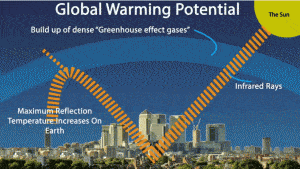
Global Warming Potential
The other problem with the refrigerants is their global warming potential. What should happen is the infrared rays pass through our atmosphere, hit the surface and most are rebounded back into space with a few rebounding and staying within the atmosphere.
Scientists since discovered that many of the chemicals in the refrigerants prevented infrared rays from pass through them, so as they build up in the atmosphere they prevent the rays from leaving which causes heat trapment and this is leading to climate change. Although there are many many contributors to this and not all are man made.

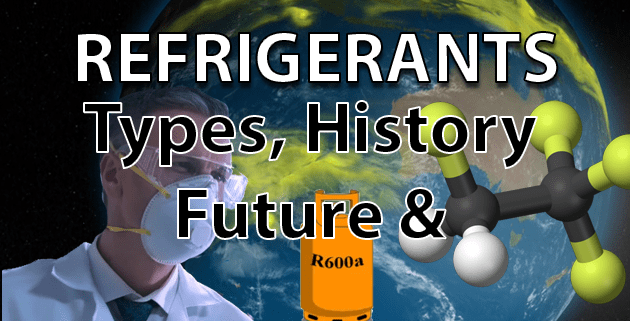

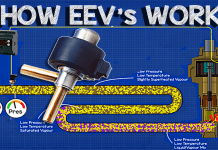


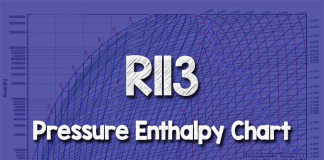
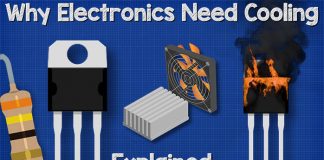
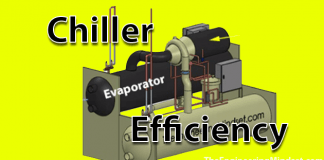
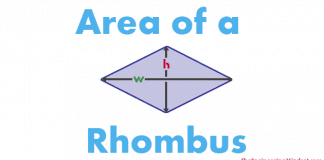
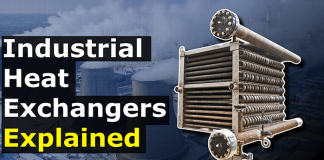








[…] to their global warming potential. We covered the basics of this in our previous article which you can read here or watch the video […]
“Thanks,
A lot of information about the refrigerant type and refrigerant future Your site provides very useful information.Thanks for giving this information !”
Could you explain the vortex working principle?
is R410 harmful for Ozon ?